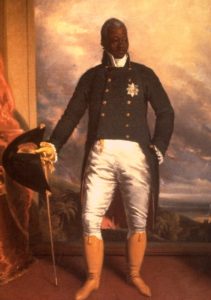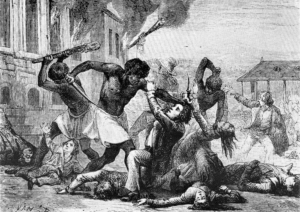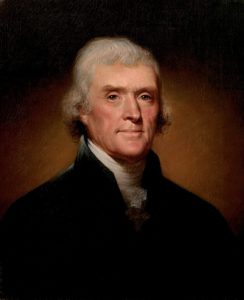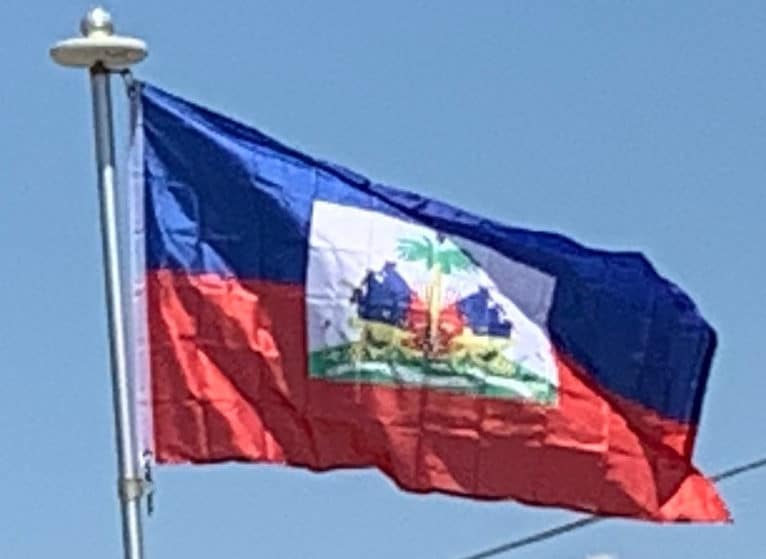
The rebels finally managed to decisively defeat the French troops at the Battle of Vertières on 18 November 1803, leading the first ever nation to successfully gain independence through a slave revolt. Under the overall command of Dessalines, the Haitian armies avoided open battle, and instead conducted a successful guerrilla campaign against the Napoleonic forces, working with diseases such as yellow fever to reduce the numbers of French soldiers. Later that year France withdrew its remaining 7,000 troops from the island and Napoleon gave up his idea of re-establishing a North American empire, selling Louisiana (New France) to the United States, in the Louisiana Purchase. It has been estimated that between 24,000 and 100,000 Europeans, and between 100,000 and 350,000 Haitian ex-slaves, died in the revolution. In the process, Dessalines became arguably the most successful military commander in the struggle against Napoleonic France.
Independent Haiti:
First Empire (1804–1806):
The independence of Saint-Domingue was proclaimed under the native name ‘Haiti’ by Dessalines on 1 January 1804 in Gonaïves and he was proclaimed “Emperor for Life” as Emperor Jacques I by his troops. Dessalines at first offered protection to the white planters and others. However, once in power, he ordered the massacre of nearly all white men, women, children; between January and April 1804, 3,000 to 5,000 whites were killed, including those who had been friendly and sympathetic to the black population.

Only three categories of white people were selected out as exceptions and spared: Polish soldiers, the majority of whom had deserted from the French army and fought alongside the Haitian rebels; the small group of German colonists invited to the north-west region; and a group of medical doctors and professionals. Reportedly, people with connections to officers in the Haitian army were also spared, as well as the women who agreed to marry non-white men.
Fearful of the potential impact the slave rebellion could have in the slave states, U.S. President Thomas Jefferson refused to recognize the new republic. The Southern politicians who were a powerful voting block in the American Congress prevented U.S. recognition for decades until they withdrew in 1861 to form the Confederacy.

The revolution led to a wave of emigration. In 1809, 9,000 refugees from Saint-Domingue, both white planters and people of color, settled en-mass in New Orleans, doubling the city’s population, having been expelled from their initial refuge in Cuba by Spanish authorities. In addition, the newly arrived slaves added to the city’s African population.
The plantation system was reestablished in Haiti, albeit for wages, however many Haitians were marginalized and resented the heavy-handed manner in which this was enforced in the new nation’s politics. The rebel movement splintered, and Dessalines was assassinated by rivals on 17 October 1806.
State of Haiti, Kingdom of Haiti and the Republic (1806–1820):
After Dessalines’ death Haiti became split into two, with the Kingdom of Haiti in the north directed by Henri Christophe, later declaring himself Henri I, and a republic in the south centered on Port-au-Prince, directed by Alexandre Pétion, an homme de couleur. Christophe established a semi-feudal corvée system, with a rigid education and economic code. Pétion’s republic was less absolutist, and he initiated a series of land reforms which benefited the peasant class.
